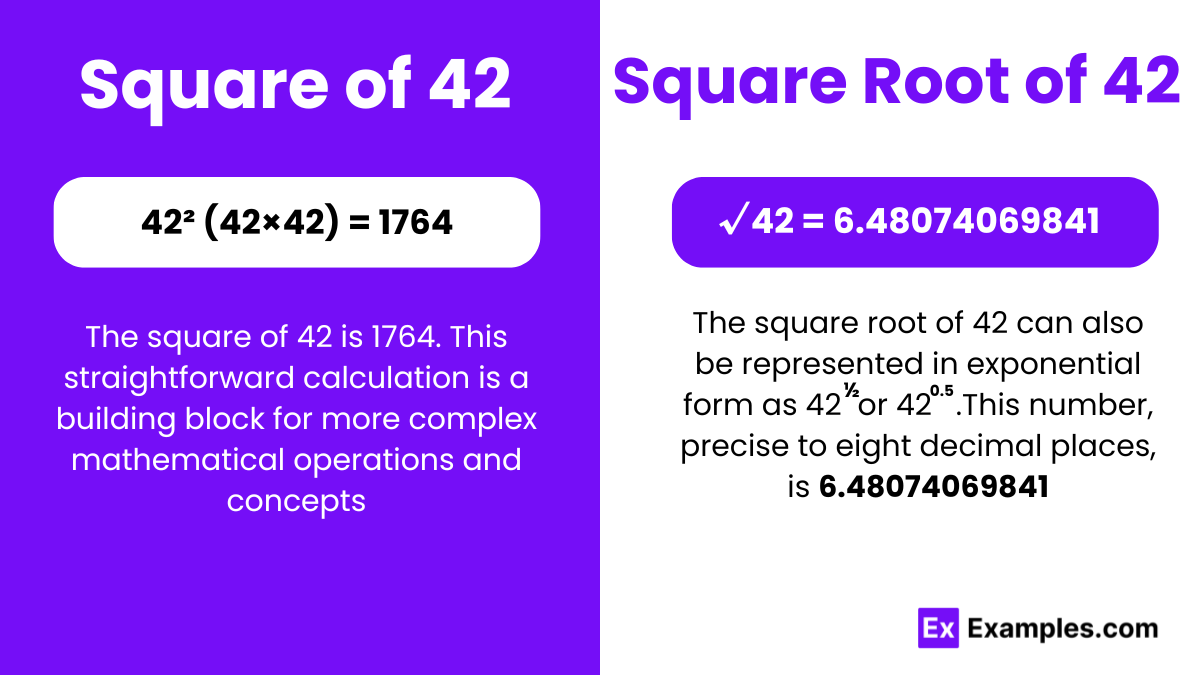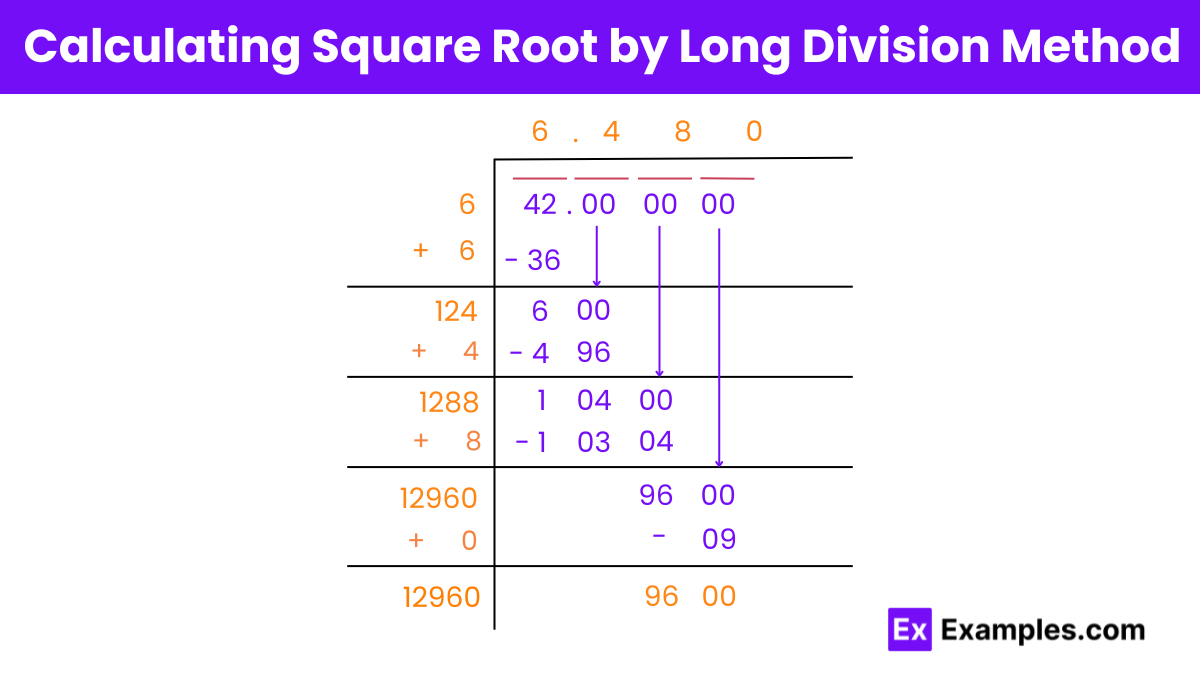What is the square of 42?
1764
1681
1444
1521

The square of 42 (42²) is the result of multiplying 42 by itself. So, the square of 42 is 1764.
Geometrically, if you have a square with each side measuring 42 units, the total area enclosed by the square will be 1764 square units.
Understanding the square of 42 is important in various mathematical contexts, including geometry, algebra, and arithmetic. It finds applications in calculating areas, volumes, distances, and solving mathematical problems.
or
√72=6.480 up to three places of decimal
The square root of 42 (√42) is an irrational number, approximately equal to 6.480740698. It represents a number that, when multiplied by itself, results in 42. Mathematically,
Since 42 is not a perfect square, its square root cannot be simplified to a whole number or a simple fraction. Instead, it is a non-repeating, non-terminating decimal.
The square root of 42 finds applications in various fields such as mathematics, physics, engineering, and finance, where precise calculations are required.
Exponential Form: 42^½ or 42^0.5
Radical Form: √42
To understand why, let’s delve into the definitions of rational and irrational numbers.
A rational number is any number that can be expressed as a fraction a/b where a and b are integers, and b is not equal to zero. It includes integers, fractions, and finite or repeating decimals.
An irrational number is a real number that cannot be expressed as a simple fraction, and its decimal representation goes on infinitely without repeating.
Since 42 is not a perfect square, its square root cannot be expressed as a fraction of two integers. Additionally, the decimal representation of √42 is non-repeating and non-terminating. Therefore, √42 is classified as an irrational number.
The square root of 42 (√42) is an irrational number. To understand why, consider the definition of rational and irrational numbers. A rational number can be expressed as a simple fraction of two integers, while an irrational number cannot. Since 42 is not a perfect square, its square root cannot be simplified to a fraction. Additionally, the decimal representation of √42 continues infinitely without repeating, indicating its irrational nature. Therefore, the square root of 42 (√42) is classified as an irrational number.
Estimation Method:
Long Division Method:
Newton’s Method:
Using a Calculator or Software:

By following this process iteratively, you can refine the approximation of the square root of 42 using the long division method.
A perfect square is a number that can be expressed as the square of an integer. In other words, it is the product of an integer multiplied by itself. For example, 25 is a perfect square because it equals 5×5.
However, 42 cannot be expressed as the product of an integer multiplied by itself. Therefore, it is not a perfect square.
Various methods, such as estimation, long division, or using iterative algorithms like Newton’s method, can be used to approximate the value of √42 without a calculator.
The square root of 42 has applications in fields like mathematics, physics, engineering, and finance, where precise calculations are required. For instance, it might be used in calculating distances, areas, or determining magnitudes of certain quantities.
While the square root of 42 can be expressed in terms of a continued fraction or other mathematical series, its representation as an infinite series or continued fraction would provide an alternative way to approximate its value or study its mathematical properties.
Text prompt
Add Tone
10 Examples of Public speaking
20 Examples of Gas lighting
What is the square of 42?
1764
1681
1444
1521
What is the square root of 42 rounded to the nearest whole number?
5
6
7
8
If the square of a number is 1764, what is the original number?
41
42
43
44
Which of the following is the square root of 42?
6
7
8
9
What is the square of 42?
1800
1700
1764
1600
If you multiply 42 by itself, what do you get?
1600
1764
1800
1700
What is the approximate value of the square root of 42?
6
6.5
7
7.5
Which number squared equals 1764?
40
41
42
43
What is the result of squaring 42?
1764
1600
1444
1521
What is the closest whole number to the square root of 42?
6
7
8
9
Before you leave, take our quick quiz to enhance your learning!

